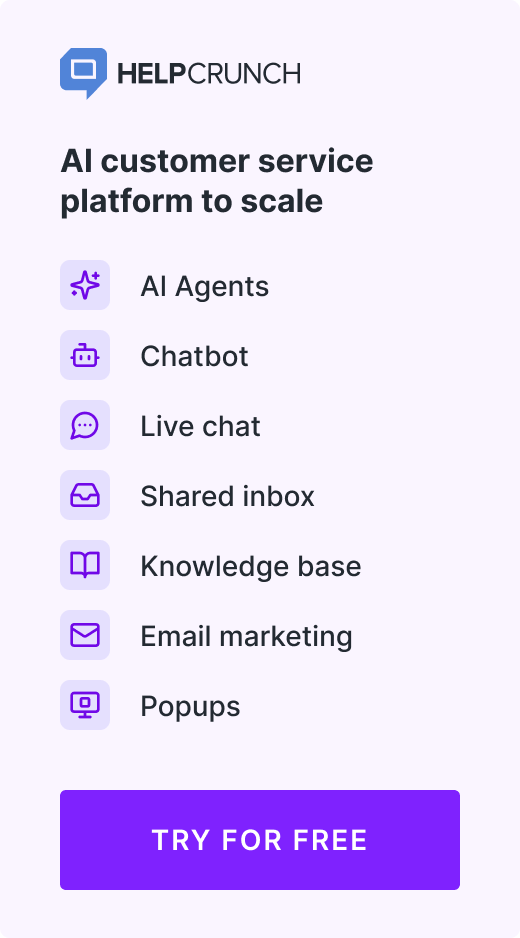10 Proven Ways To Improve Agent Productivity And Performance
We gathered these tips to improve your agent productivity, service and cut costs.
Written by Alina Fesenko

If you’re looking to improve agent productivity, you naturally want your team to do more in less time, though the benefits are even greater. Making your customer support agents more effective means better customer service, faster issue resolution and lower operational costs.
Efficient agents can handle more customer inquiries, reduce wait times and increase customer satisfaction. But boosting productivity requires the right approach, from tracking key performance metrics to workflow optimisation and training strategies.
Whether you manage a call center, contact center, or a simple help center with agents handling customer interactions, you can adapt the strategies we’ve shared here to improve your support team’s efficiency and boost your customer satisfaction. Let’s get into it.
How do you calculate contact center agent productivity?
To improve agent productivity, you need to know how to measure it. Performance can be measured in two ways: efficiency and quality.
Below are some key agent productivity metrics to consider:
| Metric | Description |
|---|---|
| EFFICIENCY. These are based on measurable numbers and time values. | |
| Average Handle Time (AHT) | The average time spent resolving a customer inquiry. |
| First Call Resolution (FCR) | Percentage of issues resolved on the first attempt. |
| First Response Time (FRT) | Time between when a customer initiates a chat and when an agent first responds. |
| Time To Close (TTC) | The median duration of a conversation from start to closure. |
| Occupancy Rate | Percentage of an agent’s time spent actively working. |
| Resolution Rate | The number of resolved cases vs. total cases handled. |
| QUALITY. These are based on subjective feedback or perception. | |
| Customer Satisfaction Score (CSAT) | Direct feedback from customers on service quality. |
| Net Promoter Score (NPS) | Measures customer loyalty and likelihood to recommend. |
Tracking these metrics can help you get a clear picture of agent performance, overall productivity, and potentially pinpoint areas for improvement in center performance.
Thankfully, customer service automation software allows you to track any team member’s performance over a specific time.
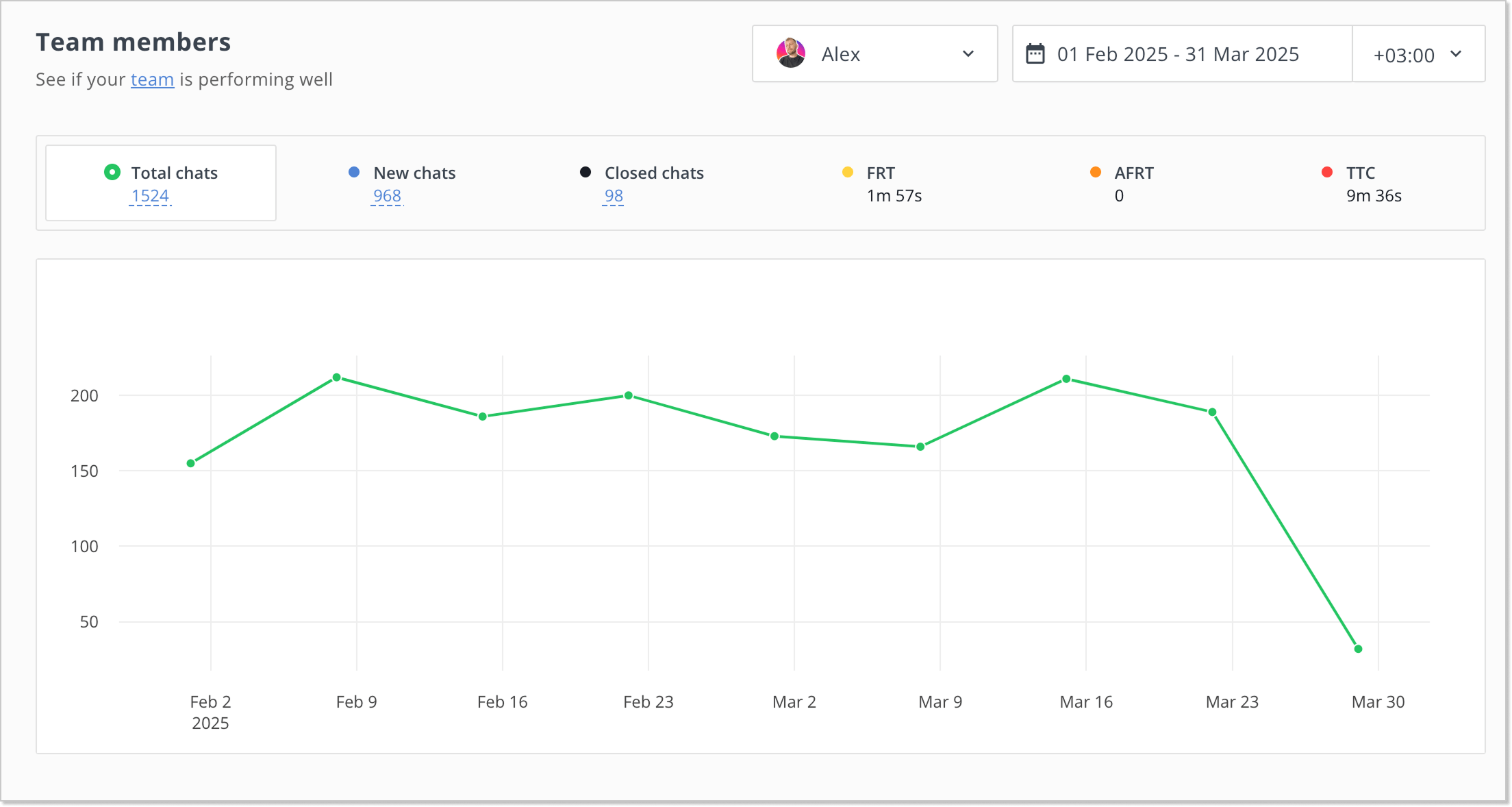
Now that you know what to look for, let’s explore how to improve agent productivity in 10 proven ways.
How to improve agent productivity through workforce management?
We’ve put together 10 proven tips you can use to improve contact center agent productivity and so your customer service level.
1. Build comprehensive training and development programs
Well-trained agents work faster, make fewer mistakes, and provide better client support. Ongoing training activities for customer service ensure your agents stay adaptable and strengthen their skills.
- Focus on continuous learning. Regular training sessions help keep contact center agents updated on customer interaction trends, new tools, policies, and best practices.
- Simulate real-world scenarios. Consider arranging role-playing exercises and real-case simulations to prepare agents for challenging situations — this will help improve their confidence and decision-making.
Your agents should know how to handle various customer issues, common customer inquiries, and learn some tested strategies to be able to deal with various groups of customers.
2. Define clear, achievable performance metrics (KPIs) to measure agent performance
Agent productivity cannot be achieved without clear key performance indicators (KPIs). People need understandable goals to stay focused and motivated.
Setting the right KPIs for customer service ensures they understand what’s expected and you have a tangible description of “high-quality service” you can compare current performance with.
- Choose the right KPIs. Balance efficiency metrics (e.g., AHT) with quality (e.g., CSAT). You can also assign priority levels to certain metrics based on business needs.
- Give agents visibility into their progress. You can implement real-time dashboards to help agents track individual agent performance and make adjustments as needed.
But don’t just stare at the numbers and assume everything’s fine. For instance, if AHT is a little higher than usual, is it because call center agents are tackling tough issues, or is there some kind of inefficiency? Understanding the “why” behind the numbers will help you improve agent productivity.
3. Prioritize agent well-being and balanced task assignment
Happy, healthy agents are more productive, engaged, and effective in their roles. For example, only in a period of 2022/23, an estimated 875,000 workers in Great Britain experienced work-related stress, depression, or anxiety, which led to the loss of 17.1 million(!) working days. Thus, it’s important to make your employees feel rewarded for what they do and this way increases their productivity.
Maintain smart task allocation
Don’t overburden one person (or a group) with customer cases, but rather try to spread queries out evenly across your team. Keep an overview of the task load across the team and balance it out.
Recognize and reward high performers
Public recognition and meaningful incentives help maintain morale and motivation. These rewards can be bonuses, unique opportunities, and some perks specific to your company, which recognize high performance and encourage others to follow suit.
4. Make it easy for your support agents to access the content they need
When your customers click on the support chat button on your website they surely expect to get a comprehensive consultation. Making sure your agents are well-versed on the topic is one of the most important components of your agent productivity.
Some companies gather content across CRMs, CMSs, collaboration tools, and shared documents, making it hard for support agents to access the needed piece of content. There is a way to alleviate this.
Customer service software like HelpCrunch makes it accessible for your agents within a few clicks. Your agents can find, access and even share the needed info with customers right in the chat window.

5. Encourage collaboration and knowledge sharing
Collaboration helps agents learn faster, solve problems quicker, and stay motivated. Good teamwork and open communication make it easier to share insights and resolve customer issues.
Promote peer mentoring
Experienced support agents can fast-track new team members by sharing best practices, troubleshooting techniques and time-saving tips. To have more knowledgeable agents, create a system that helps new team members get up to speed quickly.
Build a shared knowledge base
Keep solutions, tips and best practices in one place. Effective knowledge management can save your team and your business time and resources. A well-organised internal knowledge base means agents spend less time searching for answers and more time applying their skills to serve customers, ultimately boosting agent productivity.
6. Incorporate intelligent routing features to streamline conversations
Boost your agent productivity by incorporating intelligent routing features. They allow you to route customers to the suitable agent or a bot, saving a wealth of time for those contact center agents unable to solve the issue.
Routing not only offloads agents but also reduces customer waiting time.
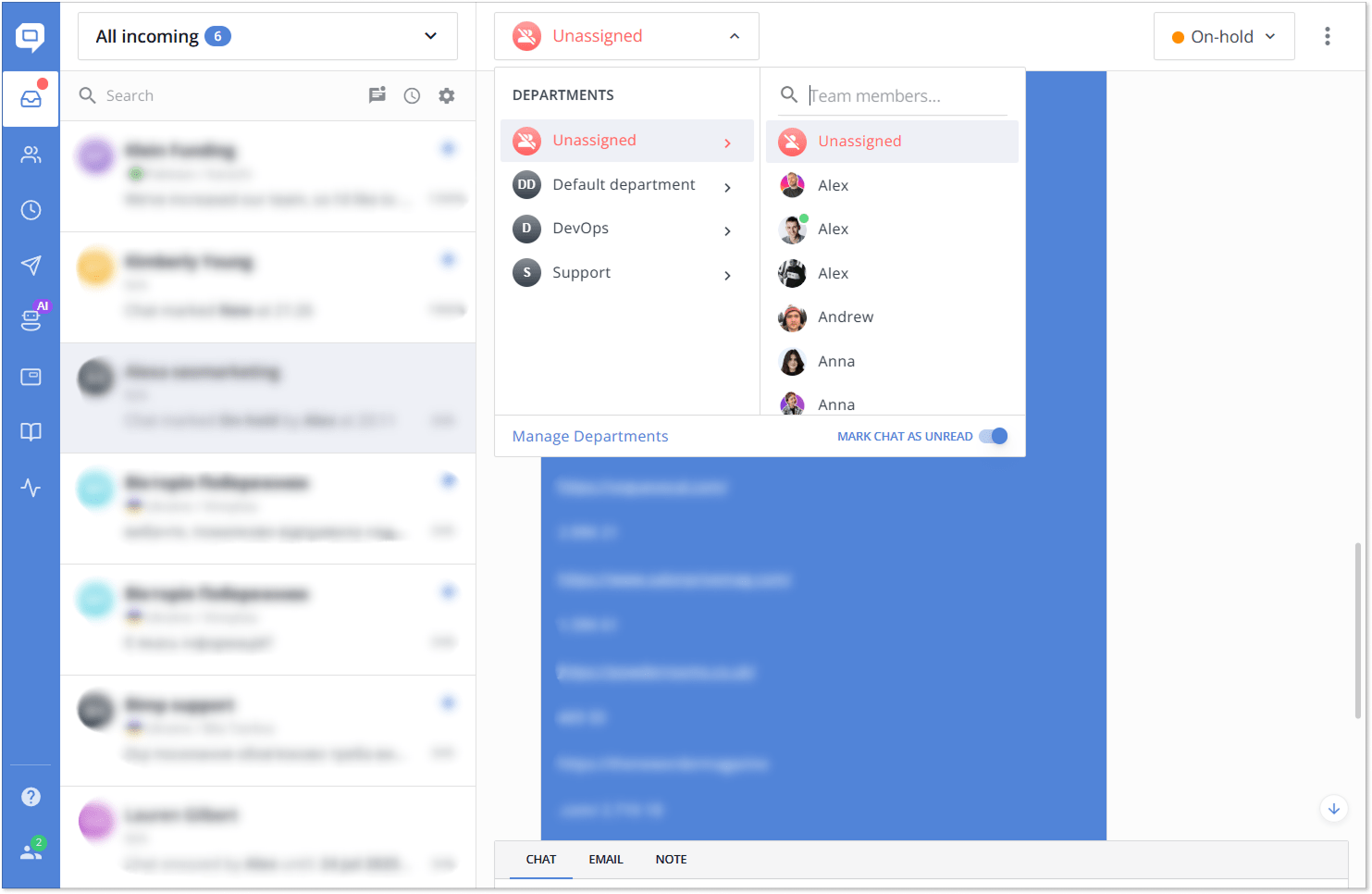
Unlock smarter support
with AI Agents to scale your business!
7. Provide self-service options for customers
Some issues can be resolved by the customers themselves, freeing up time for your support team to handle more complex cases.
(it may turn out that agent involvement was not necessary at all).
Create an intuitive knowledge base for customers
A knowledge base where customers can search for their specific questions is a valuable self-help tool. It can encompass hundreds of questions and issues in an easily accessible format.
On top of that, it’s highly advisable to set up FAQ pages complete with all the necessary information and details customers would need to resolve their questions.
Ensure that all the guides, FAQ pages and tutorials on your site are easy to find and understand.
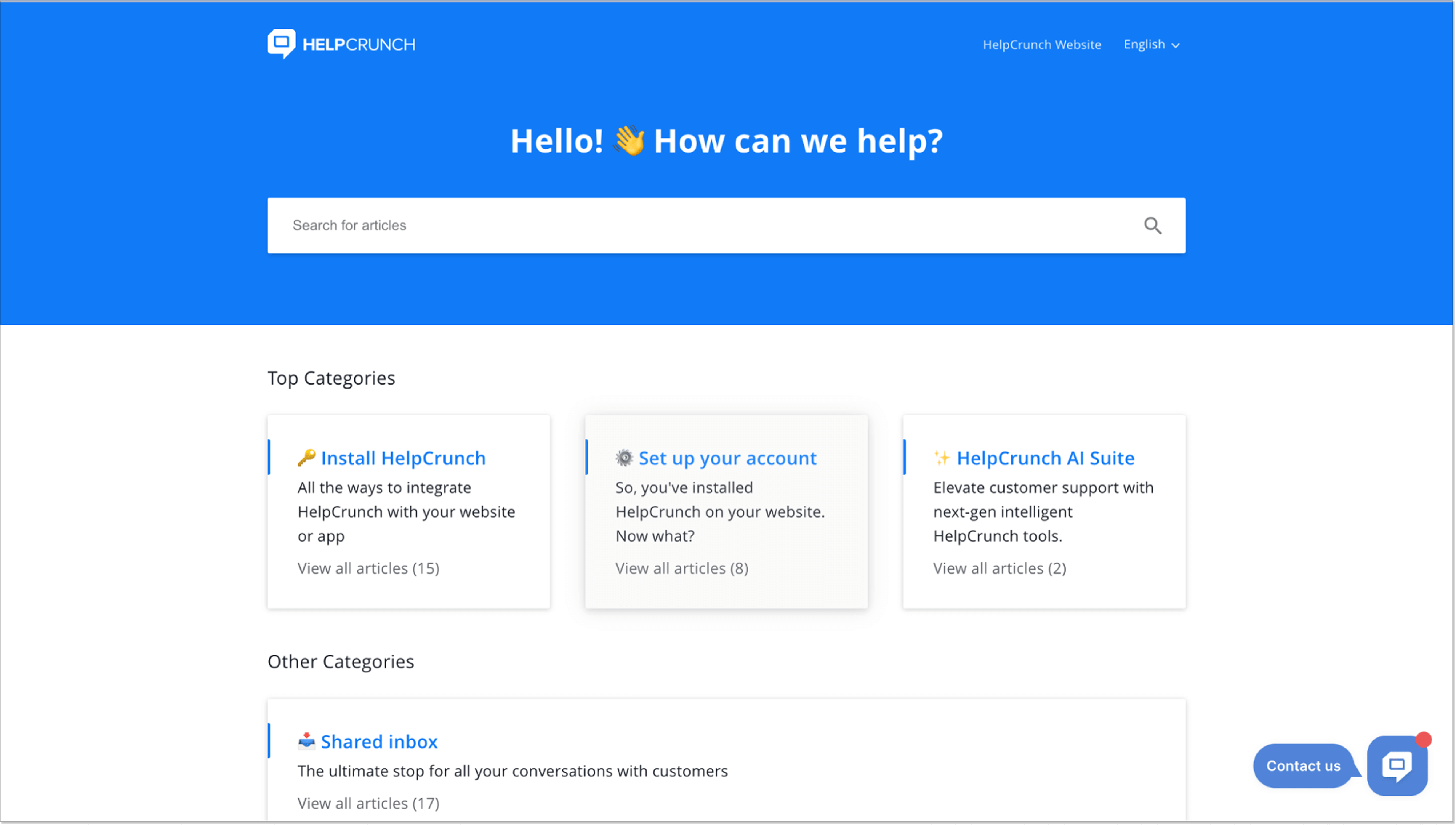
8. Empower agents with AI tools
We all know that AI tools can take care of the majority of routine text-based tasks. That means, well trained AI agents incorporated into your chatbots can easily and pretty fast handle FAQ-type questions. Your main and only task in this instance would be feeding them structured, full and reliable data sources, like a knowledge base or, pardon for repeating myself, FAQs.
This allows your human agents to focus on more complex customer interactions that require flexibility and sensibility of a Homo Sapiens’ brain.
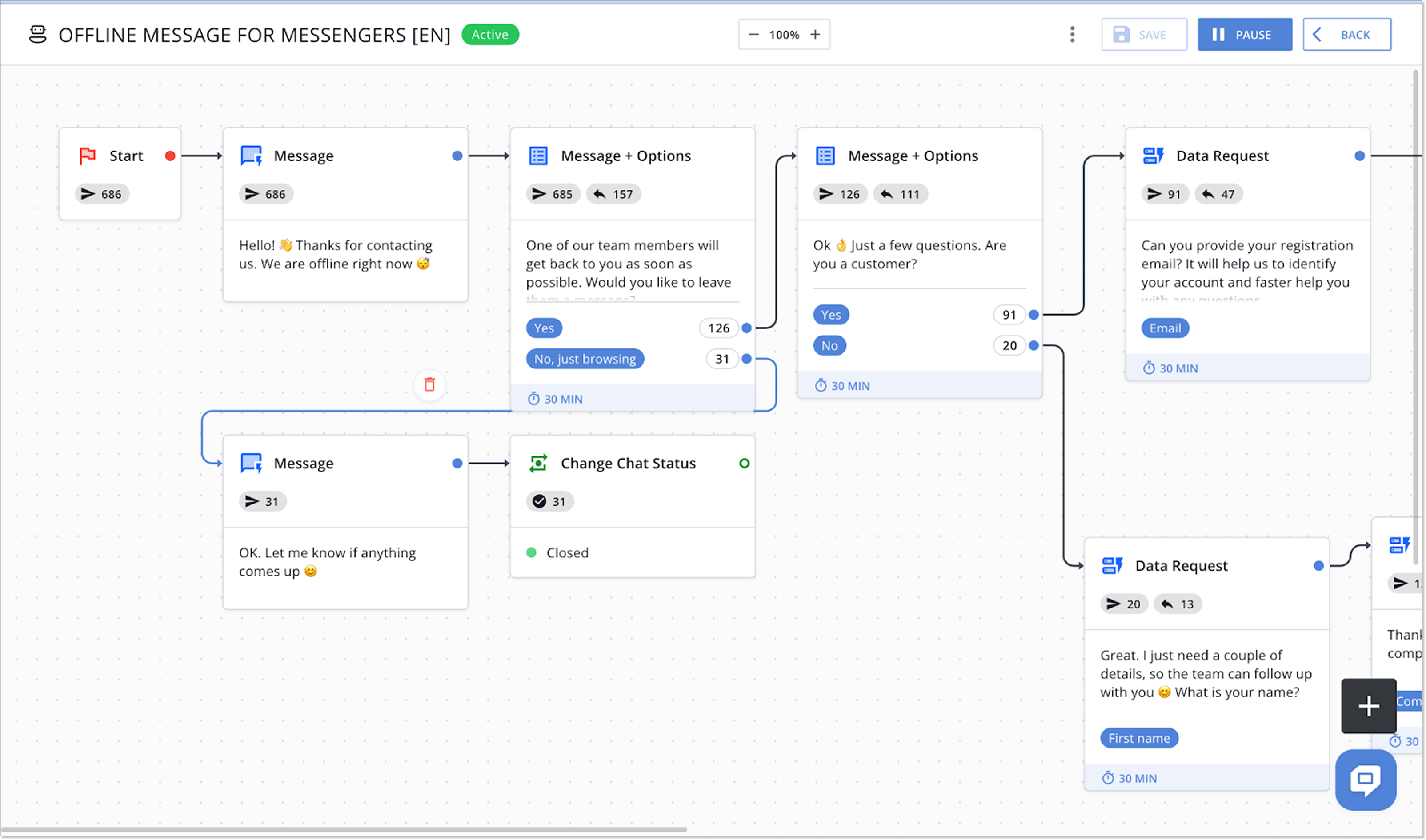
Other useful AI-based tools include fast translation and different simple operations with text like changing tone-of-voice, shortening or increasing text’s size. Such tools have been on the market for a couple of years already and are pretty capable. So, if you are interested in such improvements and looking for an all-in-one customer support solution with AI under the hood, our platform may be just what you’re looking for.
9. Continuously analyze and optimize workflows
Once you’ve developed a comprehensive customer support system, you’ll need to continuously track the effectiveness of your approach based on previously established metrics.
In doing so, you may find places for improvement of your current support system, which in turn means higher customer satisfaction, issue resolution, and digital customer service level. To optimize your workflow, consider doing the following:
- Identify bottlenecks with performance data
- Run regular audits to help uncover inefficiencies in processes and tools
- Analyze response time, resolution rate, and customer feedback to pinpoint recurring issues
- Look for patterns in escalations and common complaints to determine where workflows may need adjustment
Involve agents in workflow improvements
Direct feedback from agents often reveals valuable insights for streamlining workflows. Since agents experience the process firsthand every day, they can identify inefficiencies that might not be obvious from a management perspective. Listen to suggestions of your team and take note of the most frequently mentioned bottlenecks.
10. Gather customer feedback
Metrics are useful, but they only tell part of the story. If customers are happier because their issue was resolved quickly, then that’s what you want to focus on.
You want your agents to solve customer issues, close chats quickly and upsell. And that’s what every business wants. But it’s also important to guarantee customer satisfaction. When you connect an agent’s actions with such a metric, you can figure out what can be done more of.
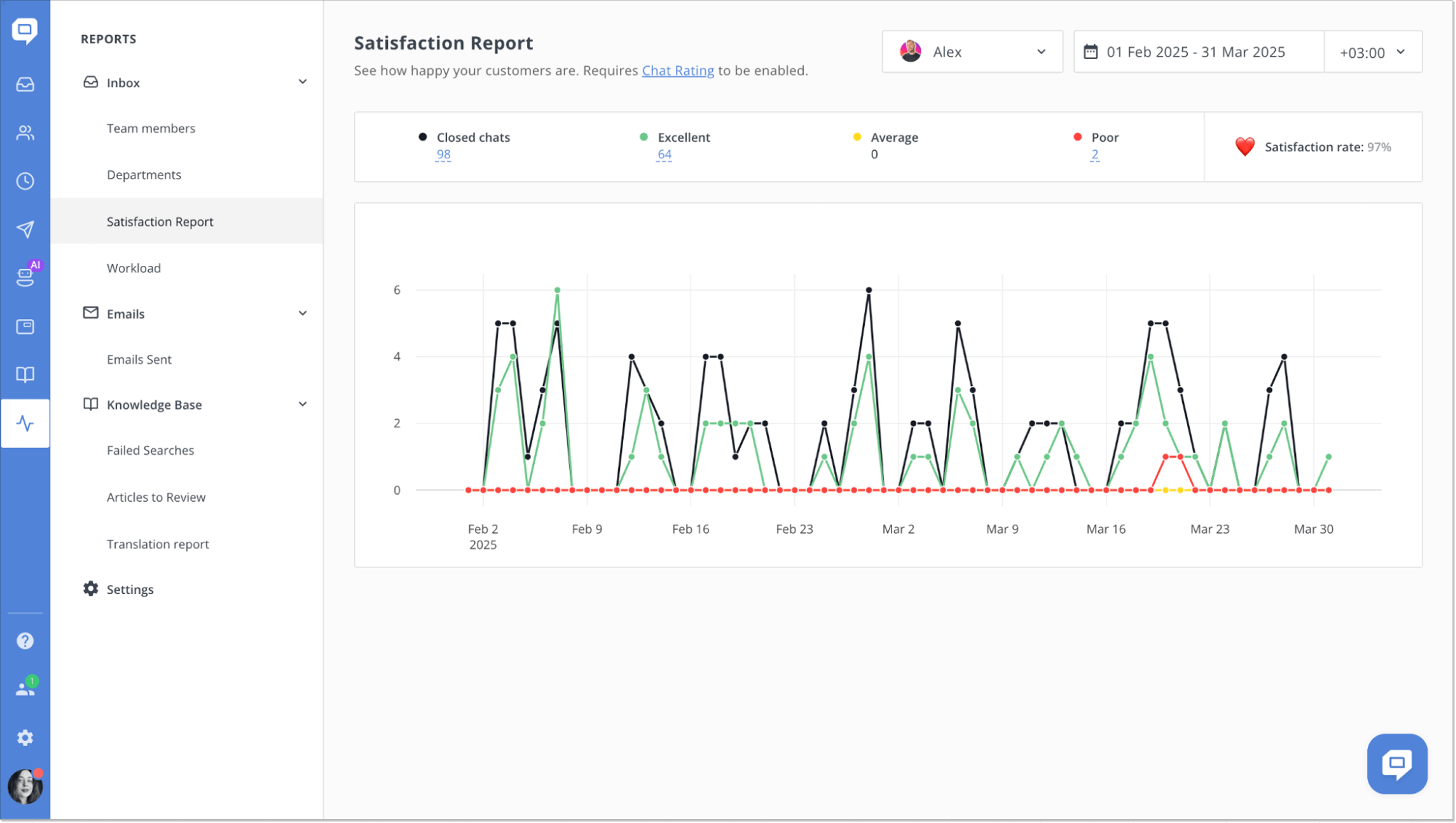
Thus, don’t limit your quality evaluation to just numbers; feedback from customers is huge. If an agent is getting a lot of good reviews because they solve problems in one call, that’s worth noting. You want to encourage that behavior.
Incorporate chat ratings
- Allow customers to rate a chat once it’s finished.
- Use the ratings to track satisfaction through detailed reports.
Align agent goals with customer needs
- Help agents understand what matters most to customers.
- Provide targeted training based on real customer feedback.
Conclusion
Agent efficiency is crucial for the success of your business because exceptional customer service is one of the most important foundations of sustained growth. That’s why improving your support center productivity should always be a top priority.
And remember, once you’ve put these tips into practice, the evolution doesn’t stop — continuous data-based optimization along with a people-first mindset leads to long-term success.

